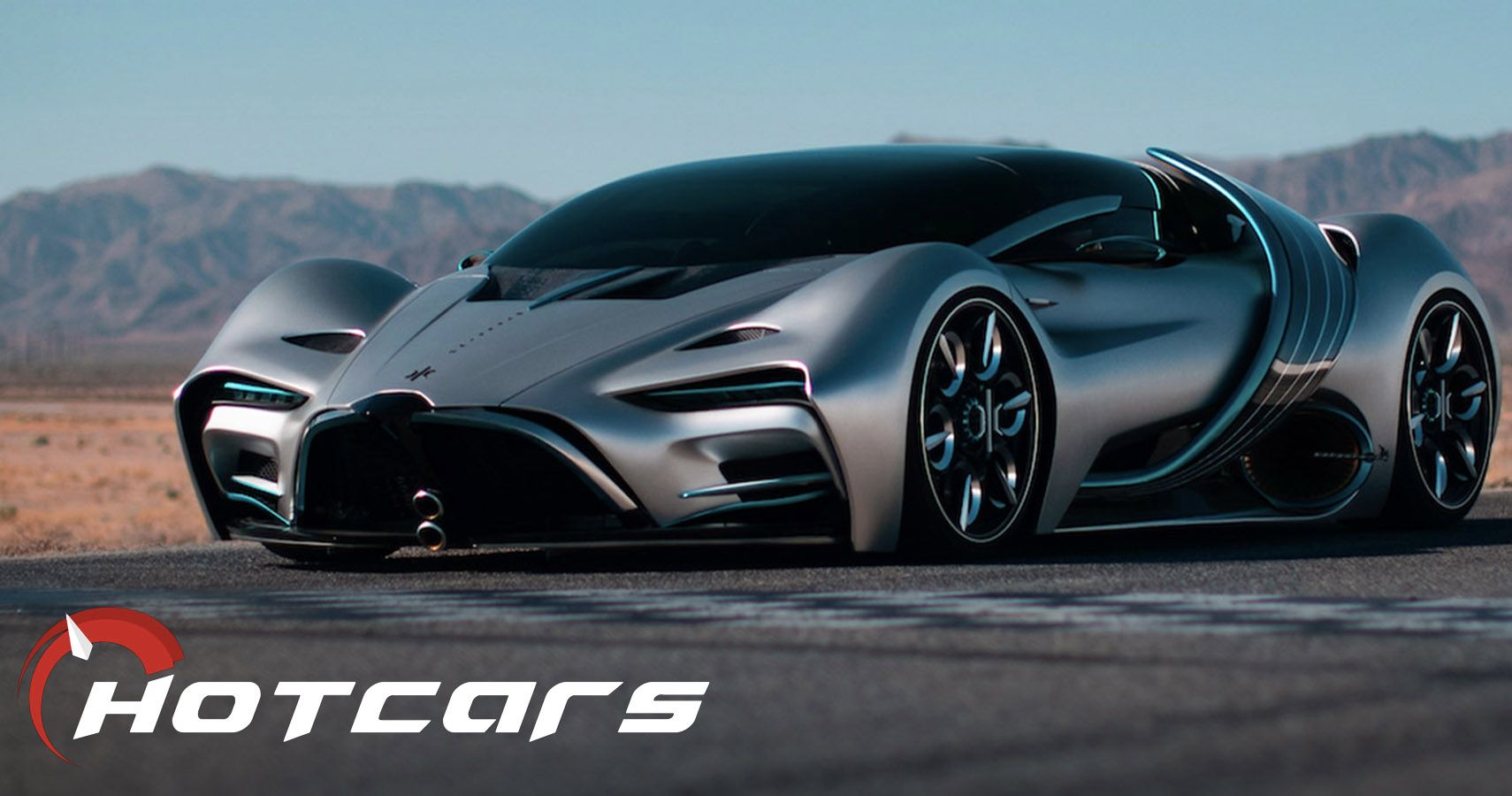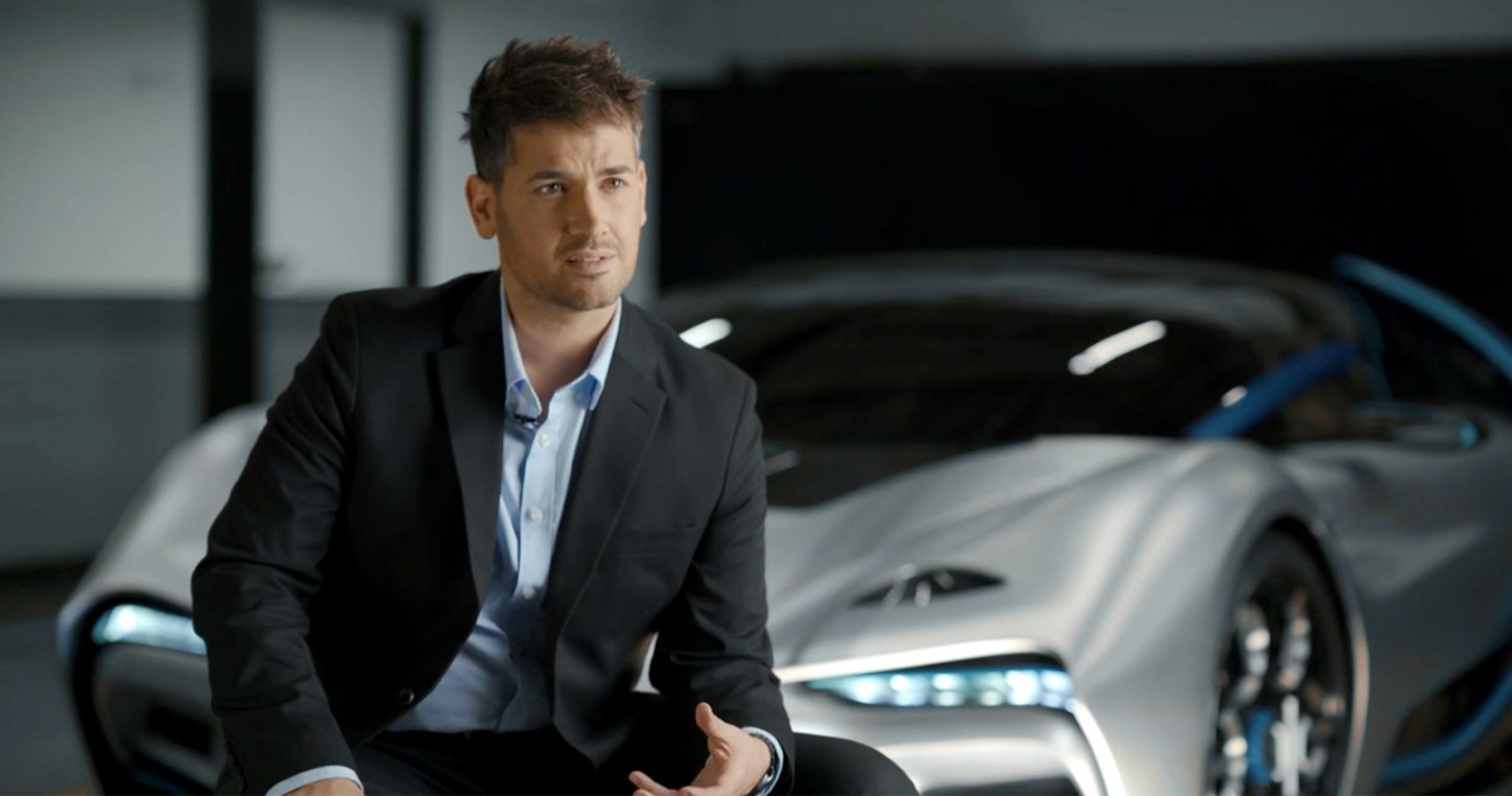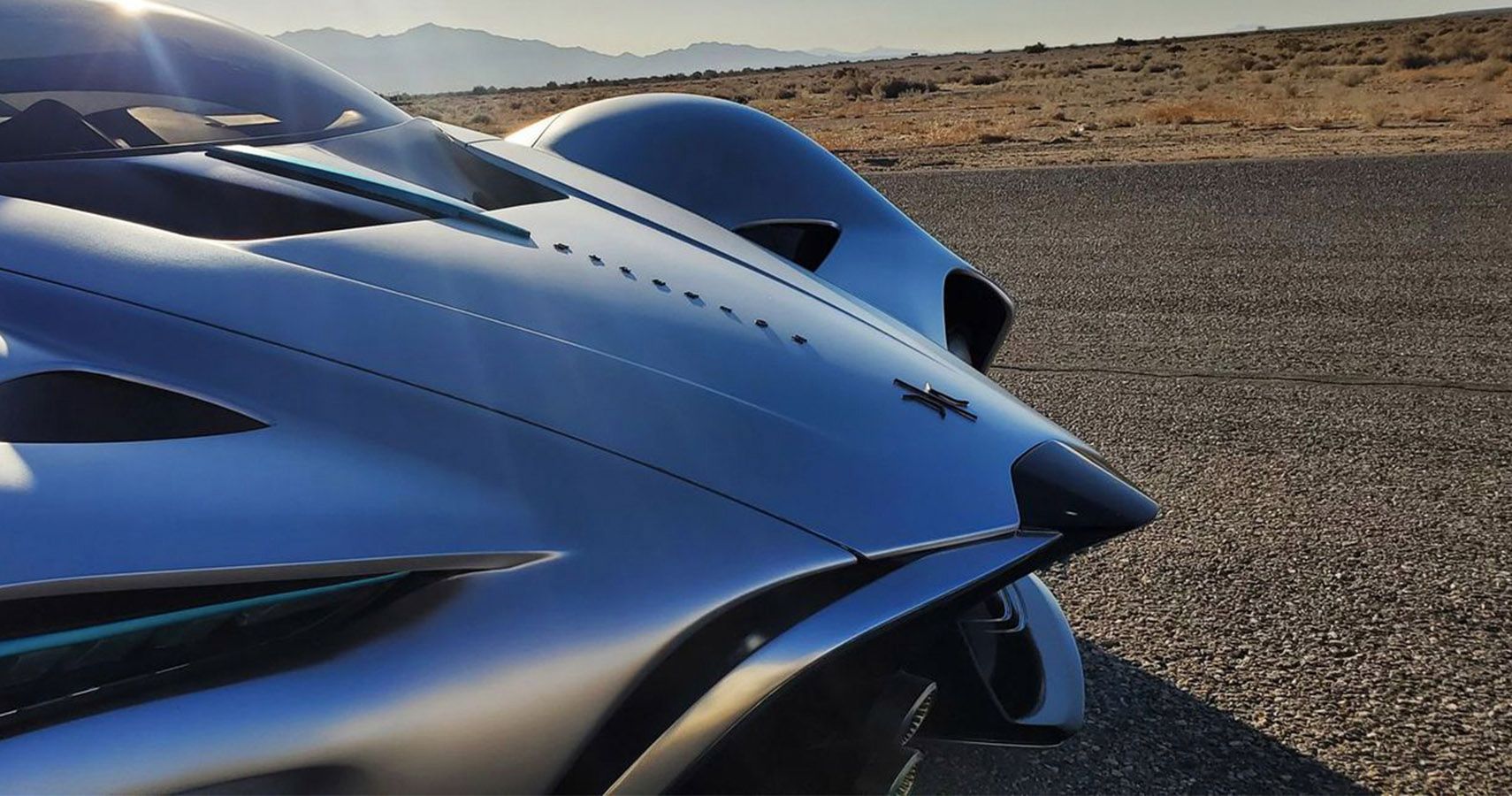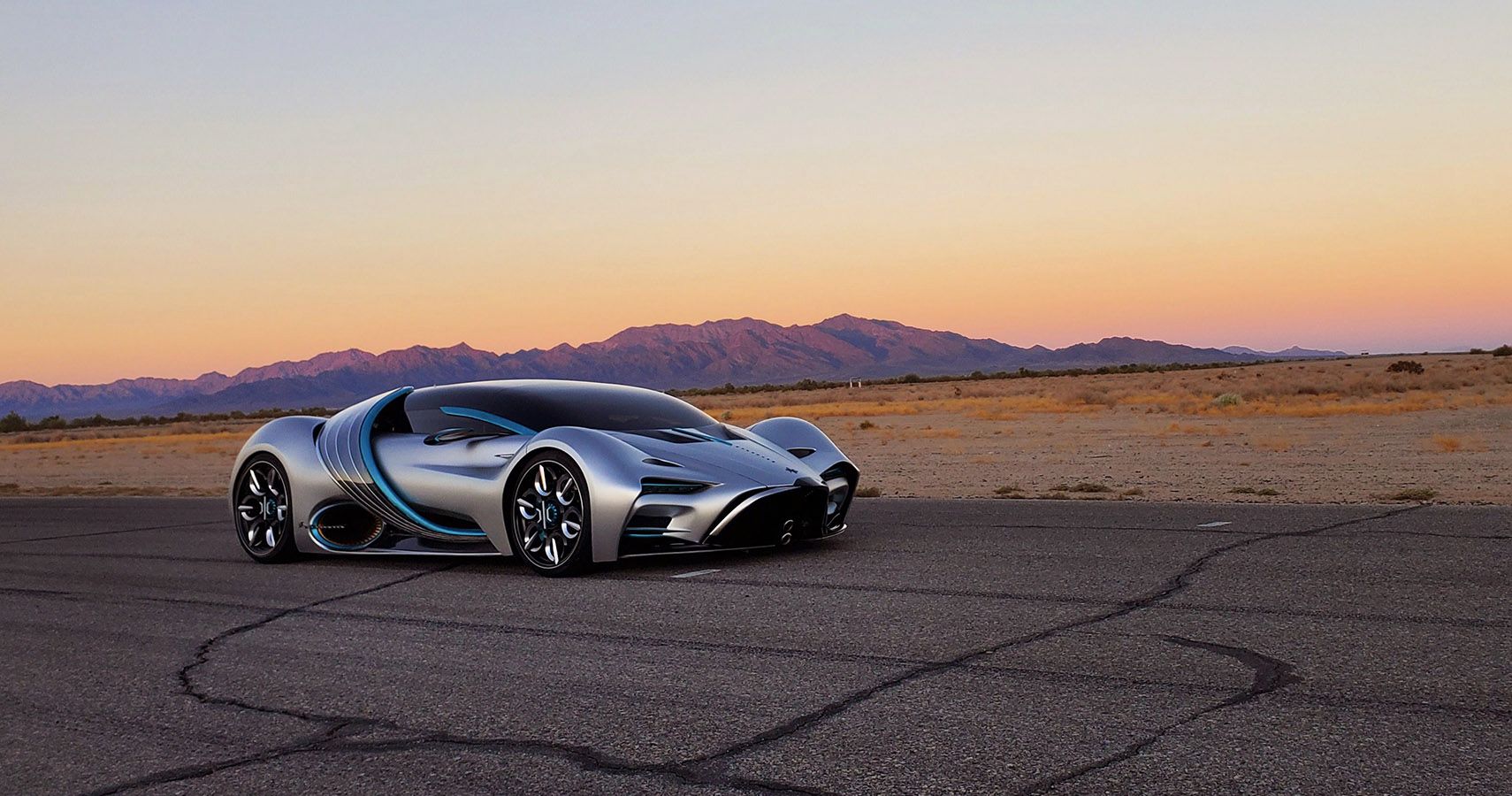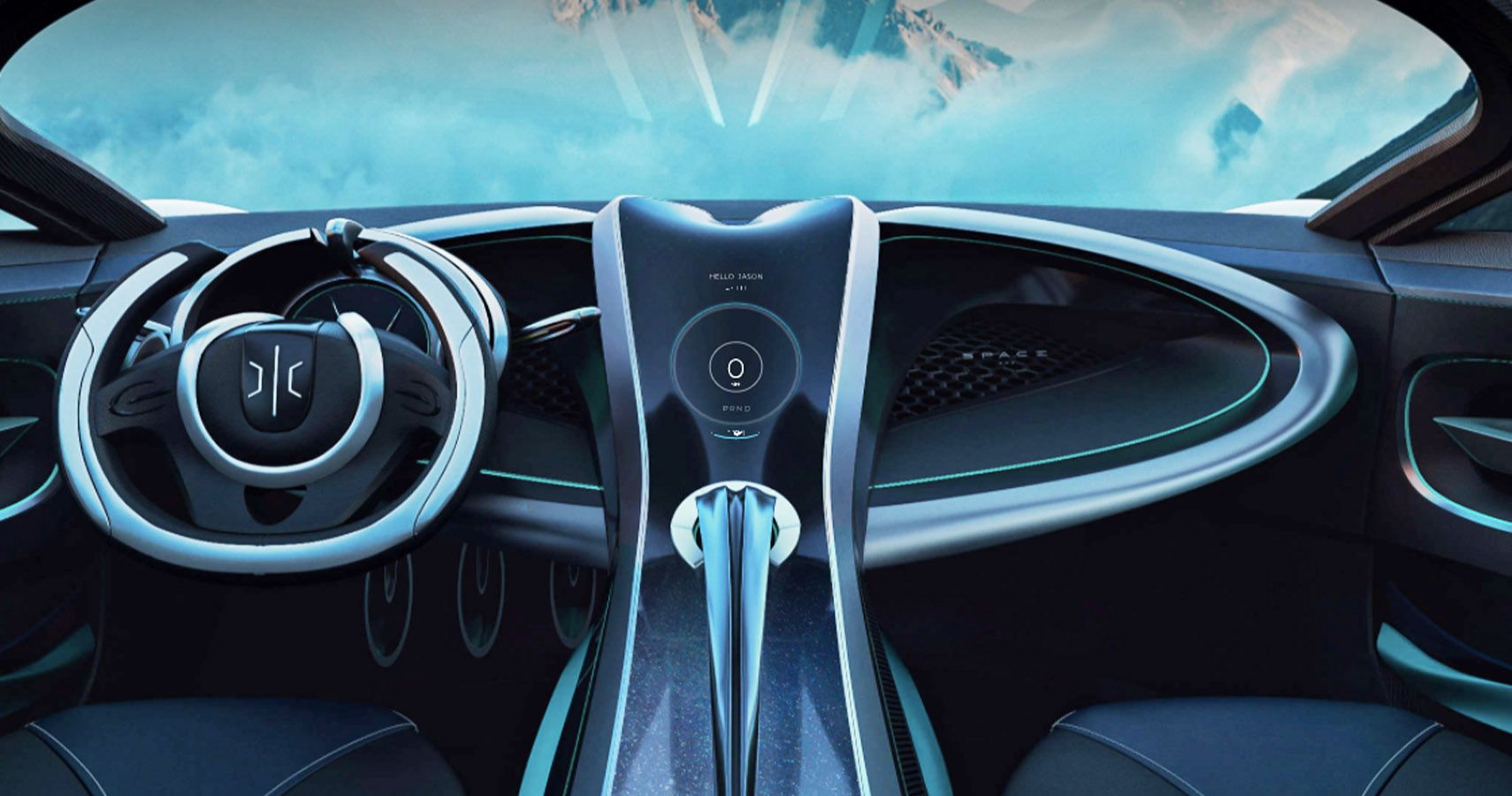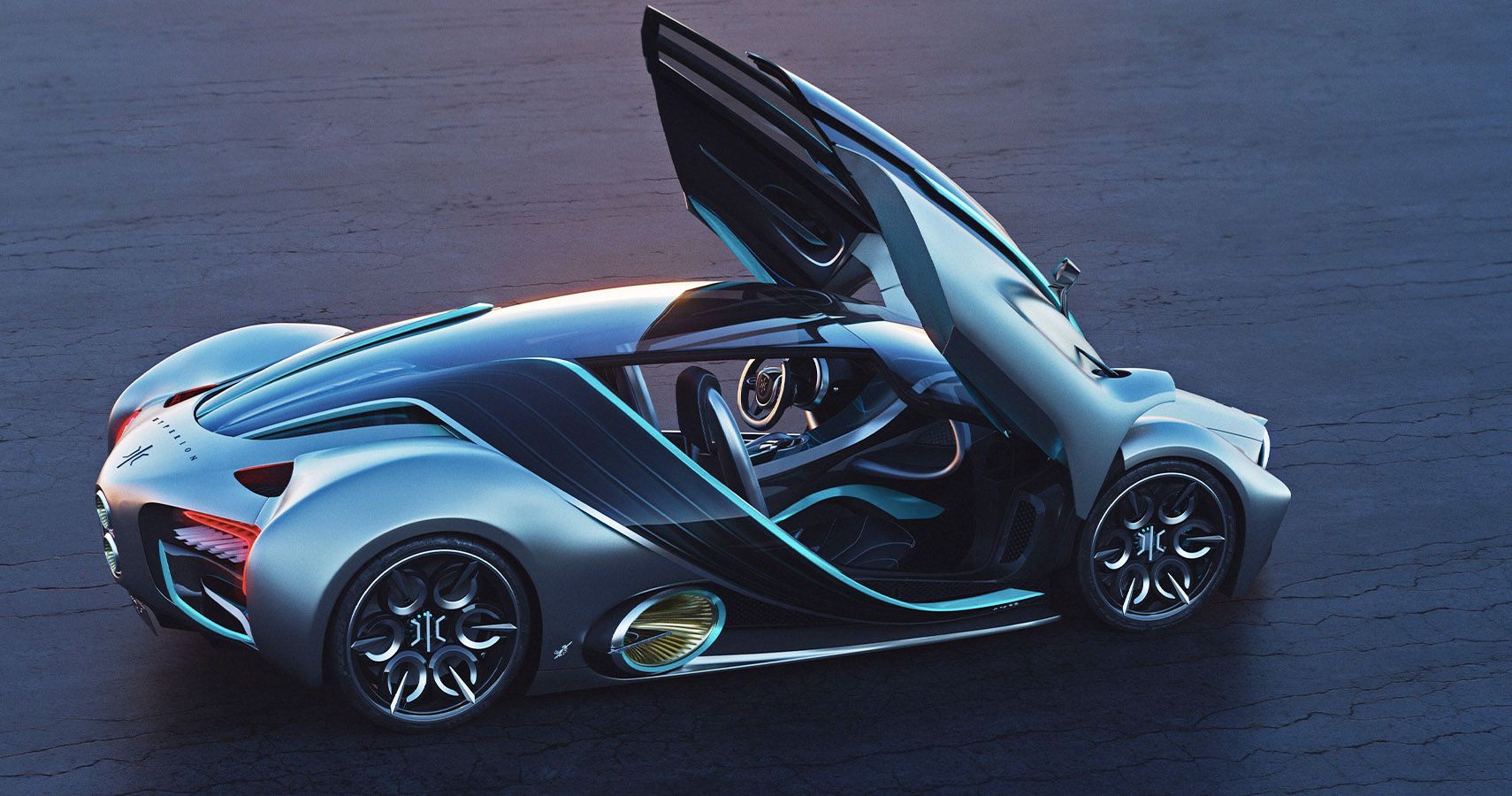When, exactly, the supercar era ended and the hypercar era began remains a point of contention for gearheads the world over. In a new series of exhibits not yet open to the public, the Petersen Automotive Museum argues that Bugatti delivered the world’s first hypercar, the Veyron, back in 2005. With its quad-turbocharged W16 engine powering all four wheels, the Veyron set the stage for obscenely expensive offerings from the likes of Koenigsegg, Pagani, Ferrari, Lamborghini, McLaren, Aston Martin, and the list goes on...
But the Bugatti Chiron that broke the 300-mile-per-hour barrier last year was really just an evolution of the Veyron—meanwhile, Lamborghini keeps churning out ever more powerful naturally aspirated V12 engines.
More recently, SSC claimed to have eclipsed Bugatti's top-speed run with a 331-mile-per-hour attempt in the long-awaited Tuatara amid rumors that Volkswagen AG might sell both Lamborghini and Bugatti to Rimac, a Croation electric hypercar manufacturer on the cusp of releasing the battery-powered C_Two. Throw in the forthcoming Tesla Roadster's borderline-hypercar stat sheet and there's a case to be made for a new classification that separates internal-combustion cars from hybrids and EVs.
But now, almost out of left field, a new hypercar from a California-based tech startup called Hyperion Motors takes the category to a whole new world in terms of futuristic styling, advanced engineering, and impressive power. Even more surprising, however, is the fact that Hyperion's XP-1 hypercar is powered by hydrogen.
I recently spoke with Hyperion CEO Angelo Kafantaris about the wild performance claims announced alongside the hydrogen-powered XP-1 hypercar and the space-age technology that underpins its radical design and engineering.
Hyperion Motors CEO Angelo Kafantaris
Kafantaris got his start in the automotive industry working at Mattel on Hot Wheels toys. Later, he'd contribute futuristic concept car designs to Hollywood productions including recent Wolverine and Independence Day installments.
Today, Kafantaris leads Hyperion Motors and recently unveiled the XP-1 to the world. But from the outset of our talk, he wanted me to clearly understand that his message isn't really about the XP-1. It's about hydrogen, in general.
Yes, the XP-1 looks like something from the next century and lives up to the bold design with stats like a 1,016-mile range, a top speed over 221 miles per hour, and a 0-60 time around two seconds. But as Kafantaris tells it, "The purpose of the car that we built was to tell the story of hydrogen. To build something where each feature could only exist in a hydrogen car, to tell the story of this element that stores electricity between the molecular bonds that hold it together.”
It's important to make clear that just like all hydrogen-powered cars, the XP-1 is actually an electric car. But rather than using batteries to store electricity, a hydrogen-powered car fuels up on—you guessed it—hydrogen, in its elemental form of a bonded pair. Combine those pairs with an oxygen atom and an electron emerges—voila, electricity!
But inevitably, bringing up hydrogen sparks a few burning questions. What about the Hindenberg disaster? And the Challenger Space Shuttle? Well, Kafantaris assured me, NASA didn't abandon hydrogen after the Challenger exploded—they couldn't, because it's the only option on the table.
“Every spaceship we’ve used to date is hydrogen-based and hydrogen-propelled," he said. "If you’re going to the moon, you need crazy range. You need the vehicle to be extremely lightweight and you need to be efficient."
Space-Age Technology Is The Point
Hyperion’s connection with NASA is no coincidence. Kafantaris repeatedly insisted that his company is “not a car company, we’re a technology company.” And that tech company’s main moneymaking business (other than planning advanced hypercars) involves continuing the work NASA begins while developing theoretical products to what they call Technology Readiness Level (TRL). Hyperion then evaluates and tests those products through prototyping to determine whether they're feasible for mass production.
All that cutting-edge technology and collaboration contributes heavily to the hyper-futuristic XP-1, but it all starts and ends with the hydrogen. Hyperion stores its hydrogen in massively over-engineered carbon-fiber tanks that Kafantaris has claimed can be dropped off a building or shot with a high-powered rifle and yet, will not explode. The company's background also involves building hydrogen fueling stations for industrial use.
And big industry is where hydrogen has already proven itself as the technology of the future. Kafantaris explained that the number-one use for hydrogen at this very moment is actually (somewhat ironically) in the petroleum industry, which uses hydrogen during the oil and gasoline refining process.
Meanwhile, other massive companies like Amazon and Walmart have latched onto hydrogen's advantages as they apply to warehousing and stocking facilities. Apparently, hydrogen-powered forklifts have become the vehicle of choice for today's 24-7, just-in-time product fulfillment model because, as opposed to battery-powered forklifts, hydrogen vehicles can be recharged in minutes and don't suffer from swift battery degradation after regular recharging.
The mental path from forklift to hypercar certainly seems circuitous to an outsider, but to Kafantaris, the fact that big business has accepted hydrogen power proves his concept can work in the realm of ultra-exclusive, high-powered supercars and hypercars.
Something New Under The Sun
Very purposefully, the XP-1 itself stands out from both the supercar and hypercar industries—not to mention the petroleum industry—that it could, potentially, render obsolete. Standing out was always the XP-1's destiny. The exterior might look radical, especially the wing-like solar panels, but the whole vehicle follows a form-meets-function mindset. “The goal, in part,” Kafantaris said, “Was to celebrate space technology in the same way that cars of the 1950s and 60s celebrated the jet age.”
Space technology definitely informs every last detail about the XP-1. I quizzed Kafantaris about the car's powertrain layout—if it can even be called that. Everyone knows where Bugatti mounted the Veyron's engine and transmission, but how does a hydrogen fuel-cell hypercar actually deliver on the kinds of performance claims that Hyperion is making?
Getting technical, Kafantaris explained that the XP-1, in a way, combines the best aspects of gasoline and electric-powered cars while deleting the negatives. Like modern EVs and hybrids, it employs multiple motors to allow for all-wheel drive; the difference comes down to where everything gets mounted in the chassis.
The main change, obviously, was doing away with the hypercar's traditional mid-mounted, fire-breathing engine. Instead, behind the passenger seats sit the XP-1's three carbon-fiber hydrogen tanks. The hydrogen is then routed through a fuel-cell power generator located below the passenger compartment, creating electricity and producing only water vapor, which qualify as the car’s only emissions. Next, between the passengers, below 98-inch touchscreen inhabiting the center console, the electricity heads to ultracapacitors, where it can be stored before rapid discharge. Hold on, I paused him, what are the ultracapacitors for?
Ultracapacitors Beneath The Center Console
“The fuel cell modules can get you power," Kafantaris explained, "But that’s the kind of power for bread-and-butter daily driving. The amount of power we need for crazy acceleration is all coming from these ultracapacitors. And they’re very, very compact and actually lightweight.”
From the ultracapacitors, the XP-1 routes power to a thinner "pancake" layer up front housing a pair of slim direct-flux motors, one each for the front wheels, as well a three-speed electric motor-transmission unit between the rear wheels that provides the majority of the car's top-end capability.
All the hydrogen tech underpinning the XP-1's performance is matched by space-age goodies on the inside and out, as well. Perhaps the car's calling card will be the wing-like solar panels on the exterior, which borrow again from NASA in that they're constructed using multi-junction solar cells (extremely expensive, typically seen on satellites) that Kafantaris said can provide, at least, "Three times the power you’d normally get from a similar-sized, top-of-the-line solar array that you’d have on top of a building.”
The solar wings also move to track the sun in the sky, but in the end, they're more about active aerodynamics, able to shift position to adjust downforce, up-force, and even side-force to optimize handling while cornering or driving through high winds. And speaking of wings, the XP-1’s V-wing doors (not gullwing, not scissor, not dihedral) were designed as an homage to the “Winged Victory of Samothrace,” a Hellenistic sculpture currently on display in the Louvre.
The Winged Victory Of Hyperion
Because the XP-1 doesn't have the weight of batteries dragging it down, this hypercar's curb weight is closer to the lightweight, minimalistic sports cars of old than the EVs, hybrids, or quad-turbo W16 monsters of today. All told, it should weigh in under 2,275 pounds—about half a Chiron, less than a McLaren F1, and just slightly more than Gordon Murray's new, minimalist T.50 thanks, in part, to more commonplace hypercar goodies like carbon-ceramic brakes, aluminum alloy suspension components, and titanium interior accents.
That curb weight doesn't include a trunk, however, though the XP-1 does have a "storage space" that Kanfataris told me could fit a briefcase or, alternatively, two medium cheese pizzas. "We had a choice," he said, "Do we want to get 1,000 miles range? Yes. Do we want to fit a set of golf clubs as much as we want to get 1,000 miles range? The answer was no.”
The XP-1's combination of hypercar power and sustainable efficiency isn’t the full story for Kafantaris or Hyperion—it merely serves as an introduction to a longterm plan of reworking the entire world’s conception of energy storage, automotive design, and even the aerospace industry. Just thinking up a plan so all-encompassing requires a certain amount of audacity, but beginning with a radically advanced hydrogen-powered hypercar built specifically to change hearts and minds certainly seems like a solid first step.
To learn more about Hyperion's wide-ranging plans after the hydrogen-powered XP-1 hypercar, click through to my second feature with CEO Angelo Kafantaris.
Sources: hyperion.inc, popularmechanics.com, and gordonmurraydesign.com.

